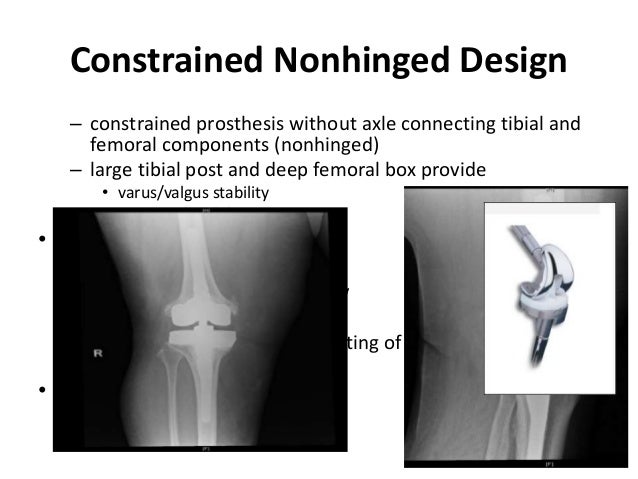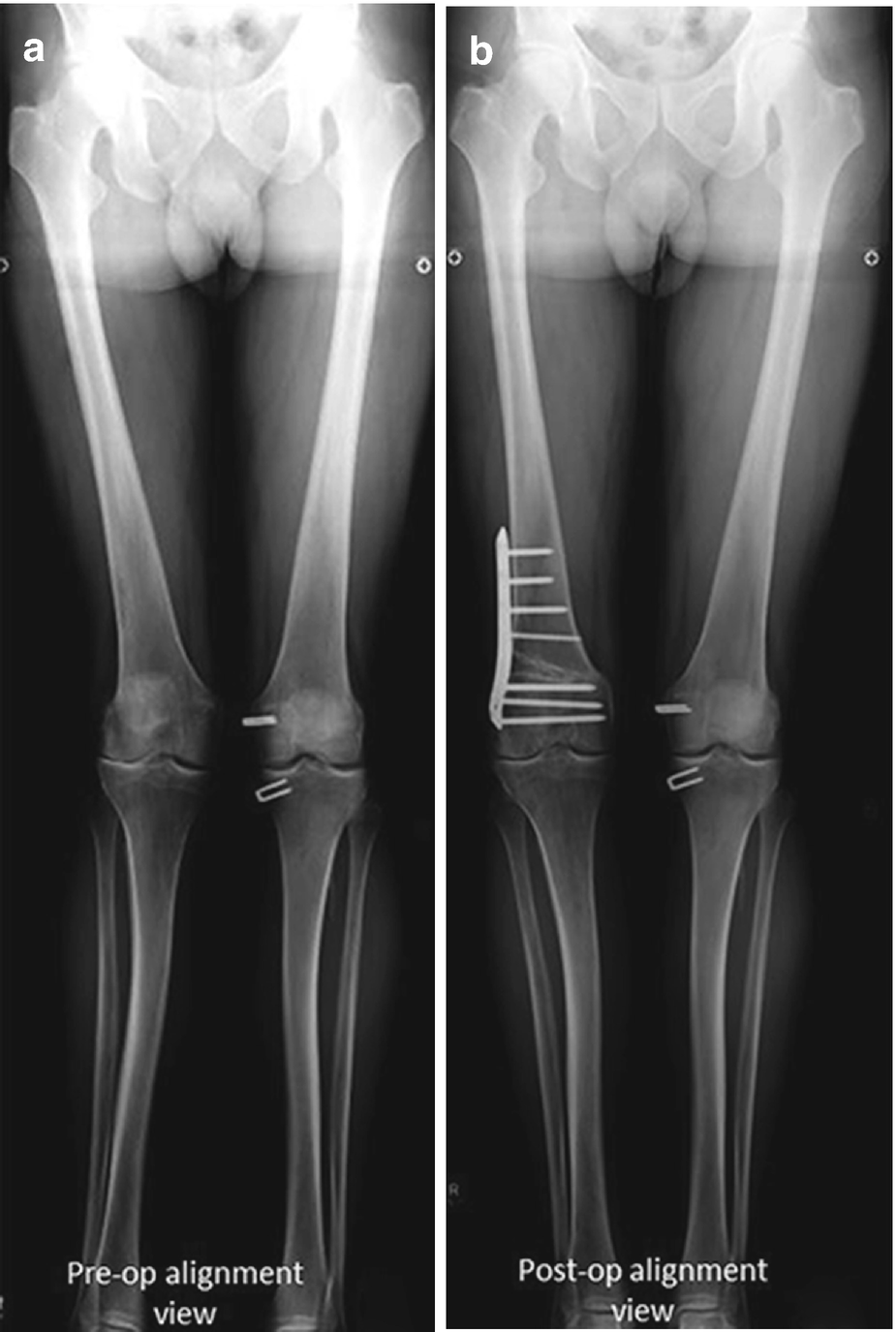A constrained procedure sometimes referred to as a hinged knee replacement is performed on patients who require all of the ligaments and muscles to be removed.
Constrained hinged knee replacement.
Constrained implants in total knee replacement.
They are used when the knee is highly unstable and the ligaments will be unable to support other types of prostheses.
Increasing component constraint may reduce instability but doing so also can cause increased forces to be transmitted to fixation and implant interfaces which may lead to premature aseptic loosening.
Conclusions hinged knee replacement can be considered as a viable alternative to more traditional unconstrained designs in the complex primary setting.
Constraint or hinged variety implants are rarely used as a first choice of surgical options.
A modular and constrained knee implant.
In this case the two components of the knee joint are linked together with a hinged mechanism.
Constraint is defi.
According to this review although excellent and very good results have been.
Instability is an important cause of failure following total knee arthroplasty.
4 5 constrained or hinged prostheses have tibial and femoral components that are linked together with a hinged mechanism.
This type of knee replacement is used when the knee is highly unstable and the person s ligaments will not be able to support the other type of knee.

























